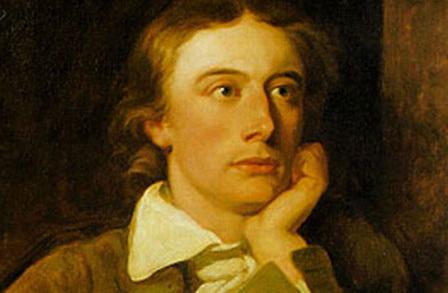George Keats Built a Sawmill in Kentucky
Christopher Benfey's New York Times review of Denise Gigante's book, The Keats Brothers, offers a glimpse into the relationship between John and George Keats. Benfey illuminates how Gigante's book shows that John and George, while not quite Goofus and Gallant, were quite opposite in their life paths.
From the review:
Suppose you wanted to write a novel about John Keats, everyone’s favorite English Romantic poet, whose travels in “realms of gold” were purely imaginary, and who died in 1821, poor and spitting blood, at the obscenely young age of 25. Faced with such narrative restrictions, you might be tempted to invent a brother who was everything that Keats was not: practical, rich, footloose, married with a child, healthy enough to reach middle age. Why not send this imaginary brother across the Atlantic to the “rank-grown forests” (as Keats wrote in his “Ode to a Nightingale”) of America, Kentucky, say, and invent encounters with luminous figures like John James Audubon and giant catfish and backwoods swindlers living on “bear sandwiches greased with bear fat”? A lively correspondence between the two brothers, spiced with verses, might serve to delineate the striking differences in their situations, and cast a reciprocal light on the poetry and the prairies.
The good news for Denise Gigante, an English professor at Stanford, is that Keats really did have such a brother, younger by 16 months, named George, to whom he wrote several affectionate poems and some of his finest and most confessional letters, including his bracing theory of human life as a “vale of soul-making.” “Do you not see,” he wrote, “how necessary a World of Pains and troubles is to school an Intelligence and make it a Soul?”
The four Keats siblings, John and George, sister Fanny, and a third brother, “star crossed” Tom, dead of tuberculosis at 19, were all well schooled in the World of Pains. The orphaned children of a shiftless stable hand, they survived on the miserly dole of a tea merchant appointed their guardian. “The lives of these orphans,” Gigante remarks, “do have the makings of fairy tale.” John trained in medicine before taking up the far riskier profession of poetry; reviews of his ambitious long poem “Endymion” were so harsh that Byron cruelly joked he was “snuffed out by an article.” George limped along as a clerk in various mercantile firms, dreaming of something more adventurous.
Gigante has had the clever idea of telling the stories of John and George as parallel lives, a dual biography of brothers. Of course, no single achievement of George’s matches John’s in any imaginable way. These aren’t the versatile James brothers, William and Henry, or the collaborating Grimms or Wrights. John wrote a dozen of the finest lyrics in the English language, including the great odes on the Grecian urn and the nightingale and melancholy, which arrived in a sustained flurry during the spring of 1819. And George? George built a steam-powered sawmill near Beargrass Creek in Louisville.
More on George's struggles in America:
The land of opportunity was also the land of crushing disappointment. On his second trip to America, after blowing his inheritance on a dubious investment with his elegant friend and neighbor Audubon, and retreating from the bleak prairies to more civilized Louisville, George finally completed his sawmill. (He would have been wiser to invest in Audubon’s pictures of otters and buzzards than a crackpot steamboat scheme.) After a few years of profit, when he built a columned mansion equipped with slaves near the center of town, George lost it all again in the Panic of 1837.
George’s fluctuating fortunes have sometimes been blamed for hastening John Keats’s death, but Gigante thinks that George, “an honorable man,” did what he could for John. If this “consummate people pleaser” sometimes promised more than he could deliver, his ventures followed the boom-and-bust economy of “a country built on speculation.”
Read the entire review after the jump. Gigante's book can be found here.



